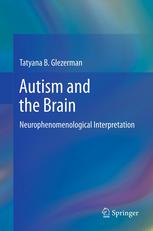

Most ebook files are in PDF format, so you can easily read them using various software such as Foxit Reader or directly on the Google Chrome browser.
Some ebook files are released by publishers in other formats such as .awz, .mobi, .epub, .fb2, etc. You may need to install specific software to read these formats on mobile/PC, such as Calibre.
Please read the tutorial at this link: https://ebookbell.com/faq
We offer FREE conversion to the popular formats you request; however, this may take some time. Therefore, right after payment, please email us, and we will try to provide the service as quickly as possible.
For some exceptional file formats or broken links (if any), please refrain from opening any disputes. Instead, email us first, and we will try to assist within a maximum of 6 hours.
EbookBell Team

4.8
74 reviewsFor years, the typical presentation of autism—the developmental delays, the social and linguistic deficits—has been well known. Despite great variation among children with this condition, certain symptoms are considered hallmarks of the disorder. Less understood is why these symptoms come together to construct autism. And as autism rates continue to rise, this information is ever more vital to accurate diagnosis and treatment.
Autism and the Brain offers answers by showing a new neuropsychology of the autistic spectrum, reviewing general brain organization, and relating specific regions and structures to specific clinical symptoms. The author identifies deficiencies in areas of the left-hemisphere associated with the self and identity as central to autism. From this primary damage, the brain further reorganizes to compensate, explaining the diverse behaviors among low- and high-functioning individuals as well as autistic savants. The result is a unique three-dimensional view of brain structure, function, and pathology, with in-depth focus on how the autistic brain:
Perceives the world.
Understands and uses words.
Perceives faces.
Understands spatial relations and numbers.
Understands feelings and registers emotions.
Perceives the self as separate from others.
Acts in the world.
Challenging readers to re-think their assumptions, Autism and the Brain is breakthrough reading for researchers, clinicians, and graduate students in fields as varied as child and adolescent psychiatry; clinical child, school, and developmental psychology; neuroscience/neurobiology; special education and educational psychology; social work; communication disorders; and public health and policy.